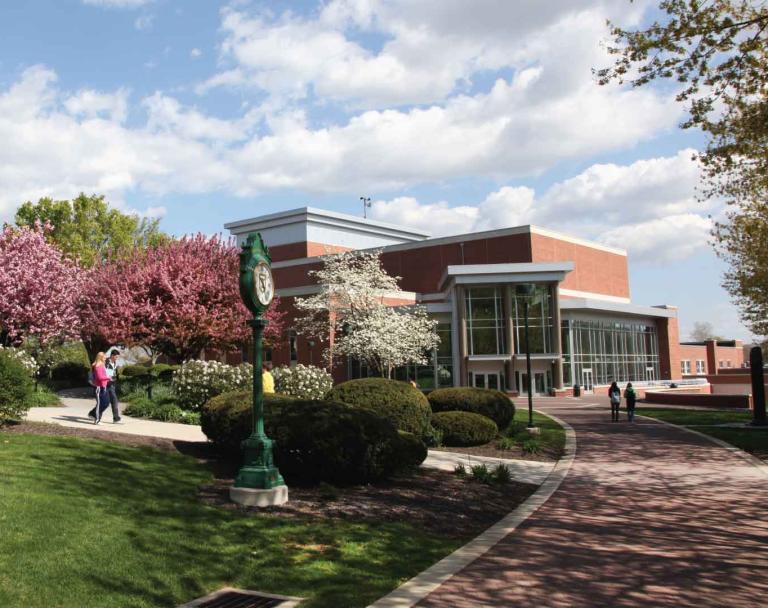Weaver and Biesecker

- Academics
- School of Behavioral Sciences and Education
- Spotlights
- Weaver and Biesecker
Education students find Artificial Intelligence a helpful tool in the classroom
Sam Biesecker ’23, a Secondary Education Math majorBrianna Weaver ’21 remembers when she thought Artificial Intelligence (AI) was a lofty idea. Too complicated for her to even imagine its application in her everyday life, she certainly didn’t think she’d be using it in the classroom as a teacher. But, in the Master of Education Technology Program at York College of Pennsylvania, Weaver has found the use of creative machines, more commonly called AI, to be a regular tool in her curriculum.
“I feel like it’s transforming the way educators can meet the needs of learners by increasing learning opportunities,” she says. By definition, AI is when computer systems are able to perform tasks that normally require human intelligence, such as speech recognition, decision-making, and visual perception. But, that definition has become broader as commerce, education, and a variety of other fields tap into technology for personalized experiences.
AI is widely used to make recommendations to people. Most people see this when searching for items online or based on purchase history. In the classroom, Weaver sees it in a fraction-based game her third graders play. While every student is playing the same game, the prompts are different for each of them. That’s because the game software is adapting to the individual, creating a sort of “choose your own adventure” for learning, she says.
“We don’t have to make it complicated to see that AI is happening all around us,” Weaver says. “A lot of trends in education are going toward fully customized learning. Students will do so much better in a variety of subjects when the curriculum is tailored to their learning style, their responses, and their unique take on topics.”
Fighting stigmas on change
Changes in the field of education can come with pushback, says Sam Biesecker ’23, a Secondary Education Math major. He often thinks of the transition from paper to digital systems as a new form of technology that faced a lot of criticism. But, he says, with the advances of online learning, especially because of COVID-19, he sees the use of AI in the classroom as a natural progression in education.
“There are a lot of things educators and students only had access to in a classroom or a physical lab,” Biesecker says. “With the push for individualized lesson plans and more technology, students and educators have access to a lot more resources. It’s changing learning for the better.”
In addition to mapping individual learning for students, Biesecker finds AI a helpful tool with grading. Now, he can keep track of a student’s progress and easily identify areas where that student might need assistance thanks to AI programs that study the algorithms in grading software. “It removes the human error of a teacher overlooking an area where a student may be struggling,” he says. “We can have a greater impact when we know where the students need us most.”
Watch this Spartan Speaks
Looking to learn more on what these creative machines mean for the future of teaching and learning? Watch the lecture here: https://www.youtube.com/watch?v=v0d7lcf-jqM

